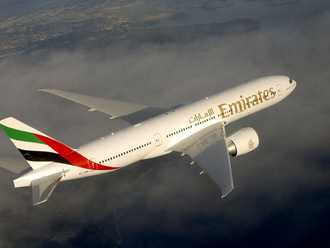
With this year’s growth pegged at 7 per cent, Indian Prime Minister Narendra Modi has been lauded for pushing through a raft of measures to tear up the infamous bureaucracy that has bogged down Indian businesses for decades. However, the World Bank’s Doing Business 2017 shows that, despite Modi’s aim to see India in the global top 50 for ease of doing business (EODB), the country moved up just one notch to 130 in 2016.
Make in India, the Modi administration’s programme for manufacturing-led economic growth, is at the centre of efforts to lift the country into the EODB top 50. “Over the past [few] years, India has implemented substantive improvements to make it easier for entrepreneurs to start a business,” Rita Ramalho, Manager of Doing Business, tells GN Focus.
Starting a business in India takes an average of 14 procedures, 26 days, and costs 16.5 per cent of income per capita. And there is no required paid-in minimum capital. New Zealand, number one on EODB, requires just one procedure and half a day to start a business. “This year, the Doing Business report finds the country has continued on the fast-paced reform path by improving four areas measured: getting electricity, paying taxes, trading across borders and enforcing contracts,” she says.
Streamlining the process of setting up a commercial electricity connection in Delhi has moved India up the EODB ranking from 127 in 2015 for the indicator to 26 in 2017. The set-up of an e-portal for paying employee state insurance contributions has made the payment of taxes easier in Delhi and Mumbai. Another portal, Icegate, has simplified border and documentation processes in both cities. Finally, the establishment of dedicated courts for resolving commercial disputes has improved the ability of companies to enforce contracts in Delhi and Mumbai.
However, while the World Bank feels that India is headed in the right overall regulatory direction, it “requires sustained effort over several years to make substantive improvements to the overall framework”, says Ramalho. In September 2015, the government released a list of 340 recommendations for states to act on in order to move the country up the rankings. They include measures to increase transparency and access to information; the creation of single-window online systems; simplified property registration procedures; environmental and labour reforms; and dispute resolution processes. The EODB report used data from Mumbai and Delhi.
There are more reasons to believe India will move further up the rankings for 2018. The World Bank report’s data collection cycle ended only a few days before the Insolvency and Bankruptcy Code was implemented in May 2016. In a press release addressing the EODB report, the government says the code will transform the country’s outdated laws with a new legal framework.
“The Doing Business indicator of Resolving Insolvency studies the time, cost and outcome of insolvency proceedings involving domestic entities [as reflected by the recovery rate], as well as the strength of the legal framework applicable to judicial liquidation and reorganisation proceedings,” explains Ramalho.
However, the new law will only be evaluated by Doing Business after the relevant sections have been notified and made enforceable, she adds. “For example, recovery rate estimates can only be re-evaluated once the tribunals vested with adjudicating insolvency cases become operational, and at least several insolvency cases are fully resolved.”
Impacting India’s ease of doing business is the fallout from November’s shock demonetisation announcement. Within five weeks, small Indian businesses shed up to 34 per cent of their employees, according to an All India Manufacturers’ Organisation (AIMO) survey reported in The Indian Express. AIMO projects this figure to reach up to 60 per cent by March, accompanied by a 55 per cent drop in revenue. However, Power Minister Piyush Goyal said the cash ban would boost revenue collections, help India increase spending on welfare projects and cut taxes. “The $2 trillion [Dh7.3 trillion] economy may need until the October-December quarter to return to complete normalcy,” Teresa John, Economist at Mumbai brokerage Nirmal Bang Equities, told Bloomberg.
It’s not all doom and gloom. One reform expected to significantly boost India’s EODB is the incoming Goods and Services Tax (GST). “By reducing tax cascading, GST will boost competitiveness, investment and economic activity in the medium term,” explains the 2016 OECD Economic Outlook.
Any economic improvement must be benchmarked, and this is the role of a country’s distance-to-frontier score. “The distance-to-frontier score captures the gap between an economy’s performance and best practice across the entire sample of 41 data points for ten Doing Business indicators that feed into the ranking calculation,” says Ramalho. She adds that India has seen bigger increases in this score since 2004 than any other South Asian country.






